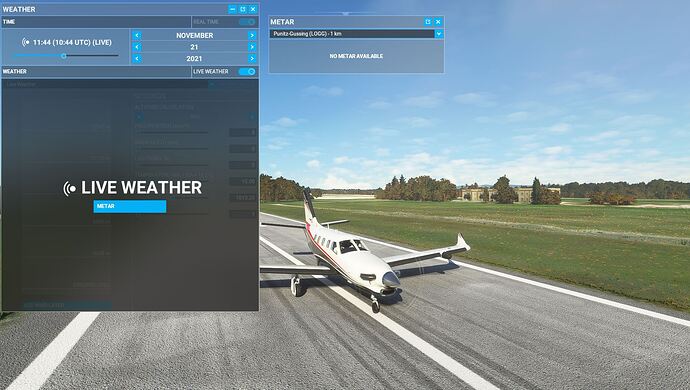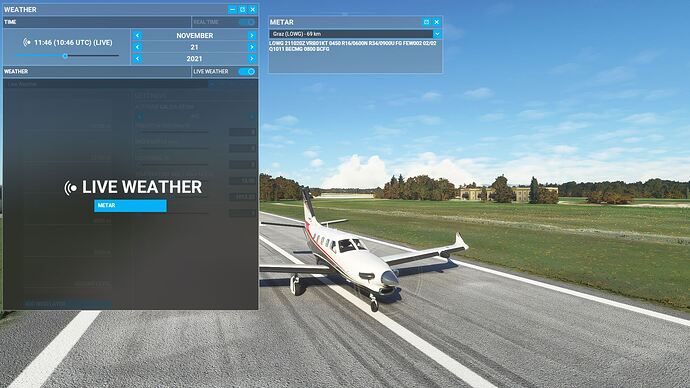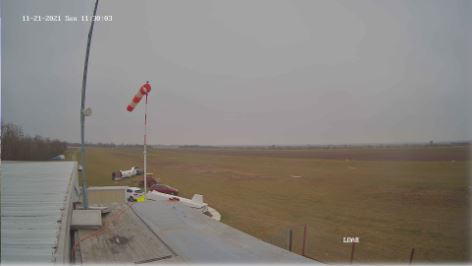And this is precisely why I am suggesting to use historic data as in 24 or even 48 hour old weather, because this way the weather engine can anticipate and has more data to work with to produce a smooth transition from one weather condition to another. Think of it as a flight path determined by points. If the path only knows the next point you will have a path with harsh turn, when the point after the next one is at a 90 degree angle. If you consider the next and the point after the next one, the path can adjust the path so make the turn more efficiently and natural.
I am no programmer. I only rely on incomplete information by others. But I imagine a weather based on real-life weather (currently) to only be able to rely on “points” for an accurate real-world weather snapshot.
Let me perhaps try again to convince more users around the hard-core base why I believe we shouldn’t be too picky about having the exact same conditions in the simulator at the exact same time we are observing outside our windows.
First of all real world weather is real world wather and doesn’t matter if it’s 2 hours or 2 days old. It still is real world weather. An IFR conndition at EDDF is just as realistic as a CAVOK condition at EDDF. Neither a 234/04 wind nor a 164/10G25 wind fail the test on it being real world weather.
Any condition that can happen at a given location in the real-world CAN be considered real-world weather.
Let’s talk about the term “live”. It seems there might be two different views on what that word means. To some “live” is the equivalent to a sports game being live as in you want to be watching it as they play.
The other meaning (the one I prefer) akin to being “alive” as in acting the way it should be like the real-world weather.
With our current “consumer” technology it appears having both versions of “live” is not possible.
What I feel IS possible however is having a fully dynamic and atmosphere engine that can very well imitate real world weather conditions. I mean it certainly fooled me pre-7.
The previous way of injecting weather had a lot need for tweaking and fine-tuning, but to me it was meant to be the new norm.
I truly believe it IS possible to have a fully dynamic and believable weather engine and provide METAR data. But the METAR and TAF data should be dictated by the simulator weather engine (which would still use real world weather data as a baseline) and not have it the other way around. And yes have it 24 or 48 hours old for it to smoothly transition from one state to another and anticipate better what do do next.
Why 24 or 48?? Because this way we still have time of day (morning/evening) typical weather conditions and still be true to seasons. A typical 21st of November weather is akin to a typical 23rd of November weather for any location.
The only and really only(!!!) reason one would be so persistent to have “live” weather akin to watching a live sports event is for online flying purposes. And for this reason I believe the source for online networks should shift where progress is being made and use METAR and forecasts that are being created within MSFS weather engine. Again this is weather still using real world weather. 24 or 48 hour old real world weather is still real world weather as it’s source. It is just using different techniques to depict it. I see the community as whole, which includes VATSIM, XP, P3D and MSFS. And I believe if progress is being made somewhere, this should be the standard. If MSFS can provide a superior way of simulating weather than online networks should adapt to it, rather than MSFS being forced to adapt to other if progress is halted or even regress is necessary or any other form of bending that causes unwanted and unrealistic side-effects. For a P3D simmer, which weather engine heavily relies on METAR data it doesn’t really matter if these parameters come from the NOAA or from MSFS generated weather, which on it’s own is still using real-world data. So real-world weather data still is provided through a different route and on a different timeline.
Instead of flying with 21/11/21 weather on the 21st, we’d be flying with 19/11/21 weather on the 21st. What difference does it make if “everyone” within the community is using and flying on 19/11/21 weather on the 21st. What difference does it make if everyone within the community is flying in IFR conditions at EDDF, while it’s CAVOK outside?
I am in for any kind of smoothing to get the best of both worlds. What I don’t want to back to however is “weather condition bubbles” around the aircraft. That was one of the best things about MSFS weather. Being able to see the different types of weather conditions from a distance and fly into it. Or see that kind of weather approaching you, while you’re still on the ground. I remember experiencing a change in weather from few clouds to nearly overcast with a transition so seamless I was like a little kid in a toystore.
 I think it fits in well here.
I think it fits in well here.


